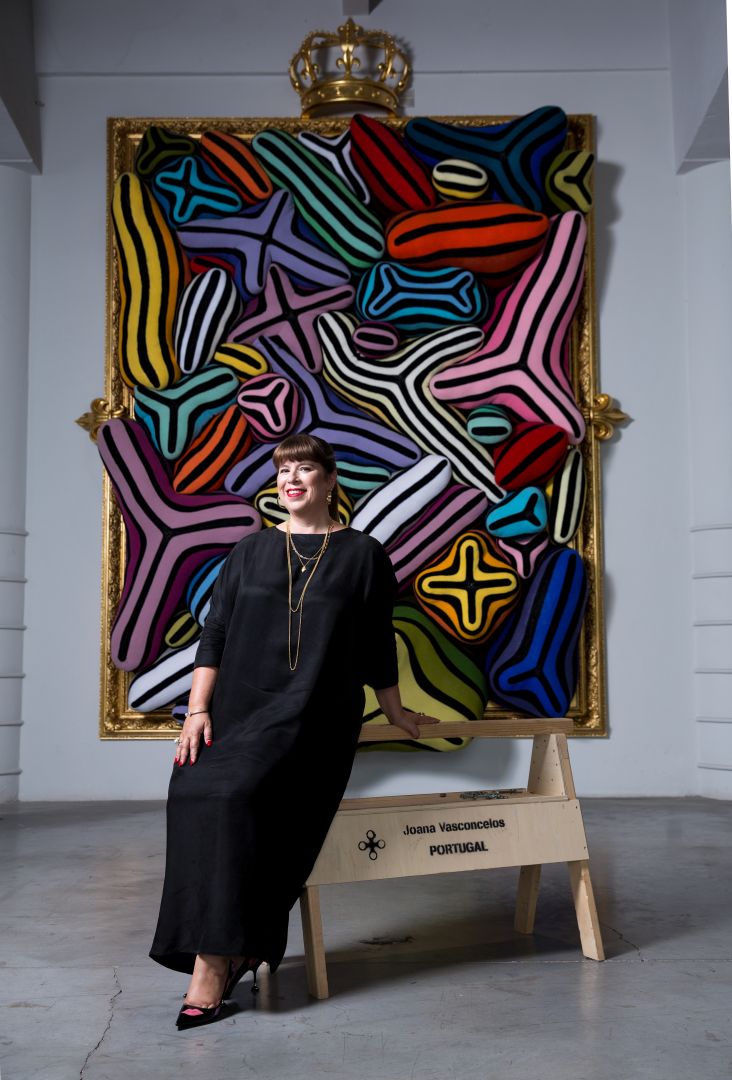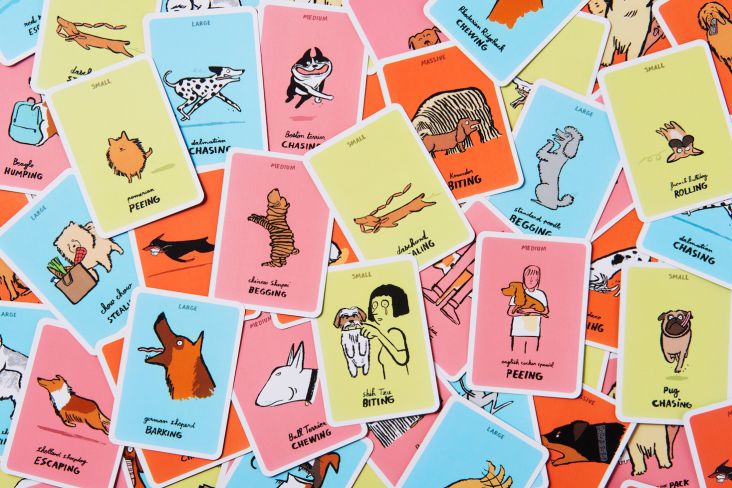Julian Trevelyan: The Artist and His World is a landmark show at Pallant House Gallery
The first survey exhibition in 20 years of British artist Julian Trevelyan (1910–1988) opens at Pallant House Gallery in Chichester this autumn. A painter, printmaker and designer, Trevelyan was experimental throughout his life and created an important and original body of work that was influenced by European modernist movements yet entirely his own.
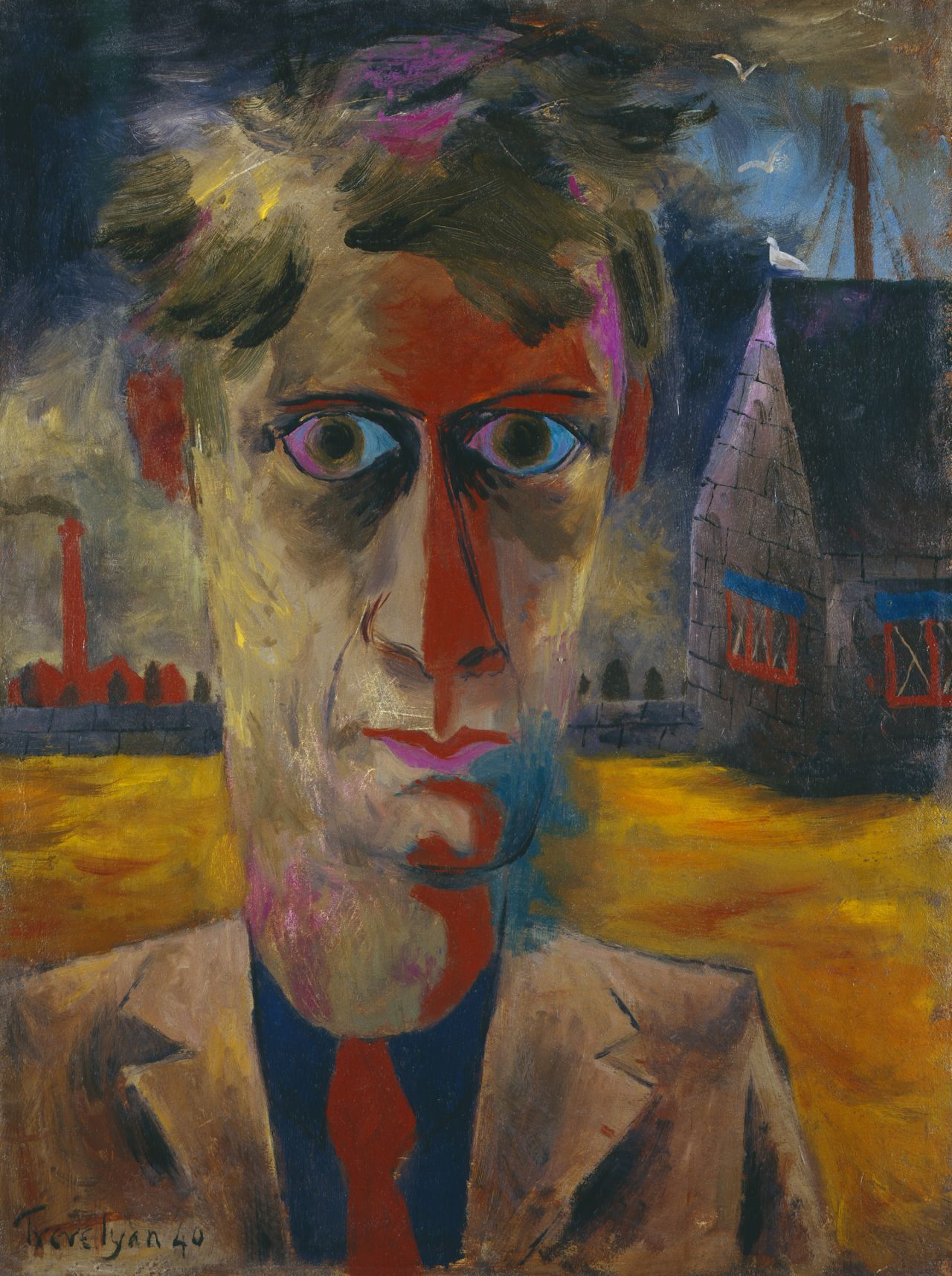
Julian Trevelyan, Self-Portrait 1940, Oil on canvas, 61 x 46.4 cm © National Portrait Gallery / The Julian Trevelyan Estate
The exhibition brings together 90 paintings and prints, as well as rarely seen sketchbooks, letters and photographs that emphasise Trevelyan’s extensive contribution to mid-20th-century British art.
Surveying the broad scope of his career, the show will examine Trevelyan’s early Surrealist works, his depictions of the industrial north of England as part of the Mass Observation project, his fascination with foreign places and his years in London, when he lived and worked alongside the River Thames and taught printmaking at the Royal College of Art.
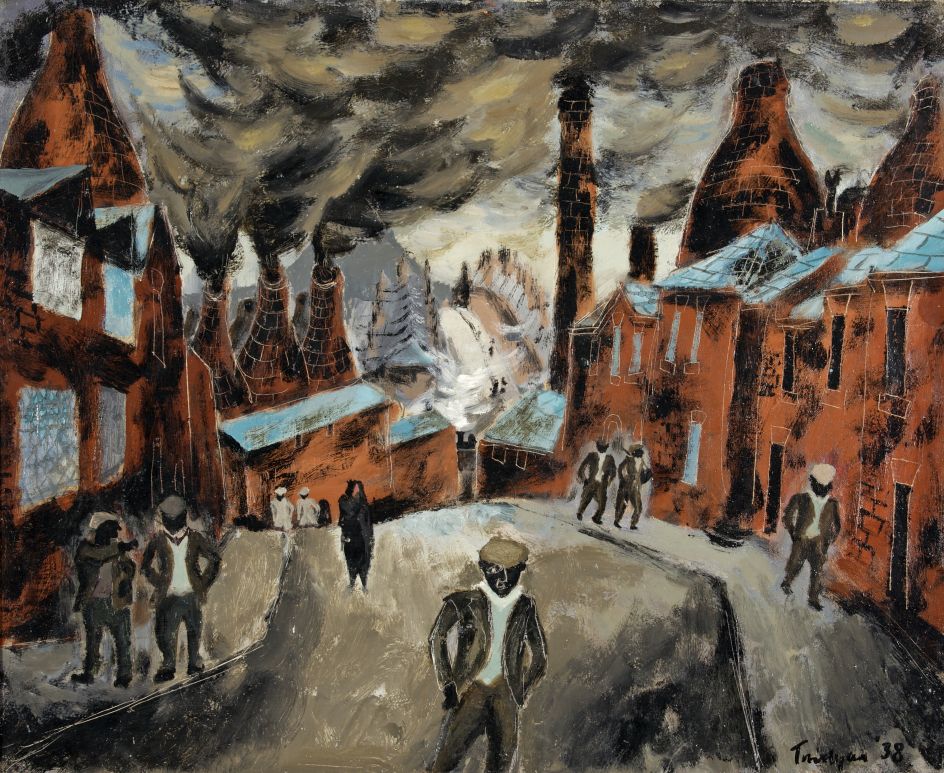
Julian Trevelyan, The Potteries, 1938, oil on canvas, 53.3 x 66 cm, Swindon Museum © The Julian Trevelyan Estate
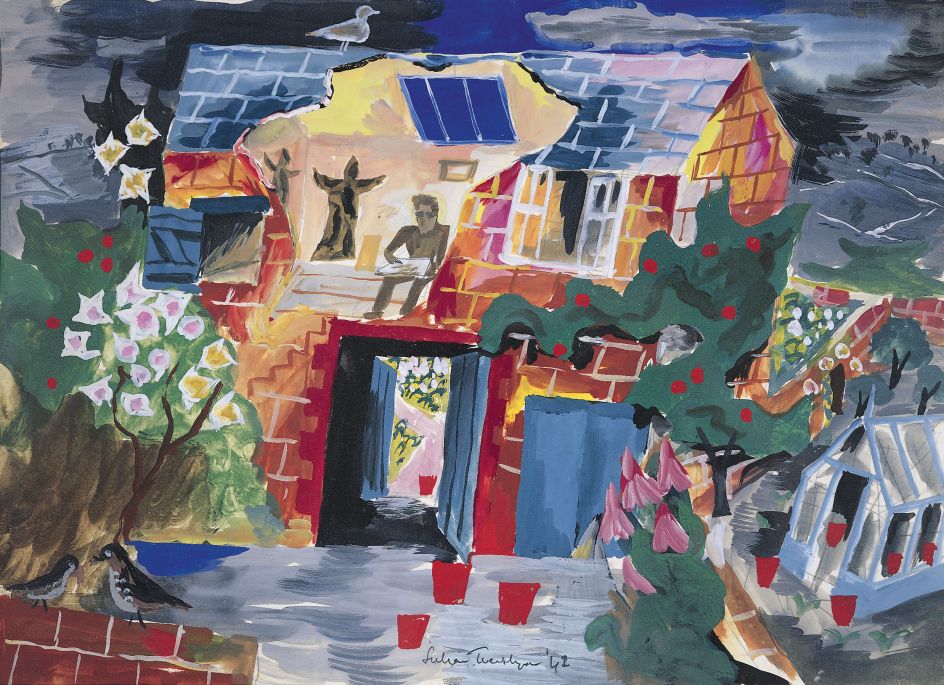
Julian Trevelyan, My Quantock Studio, 1942, gouache on paper, 21 x 33cm, Private Collection © The Julian Trevelyan Estate
Despite painting since childhood, Trevelyan went to Cambridge University to study English Literature where he joined a lively avant-garde group that was responsible for the first published Surrealist statement in Britain – in it, Trevelyan exclaimed, "Let us gladly shout: to dream is to create." In 1931, Trevelyan gave up his degree and headed to Paris to pursue what he saw as his true calling as an artist. He joined Atelier 17, the legendary experimental printmaking studio of the painter and engraver William Stanley Hayter, where he worked alongside Alberto Giacometti, André Masson, Max Ernst and Joan Miró.
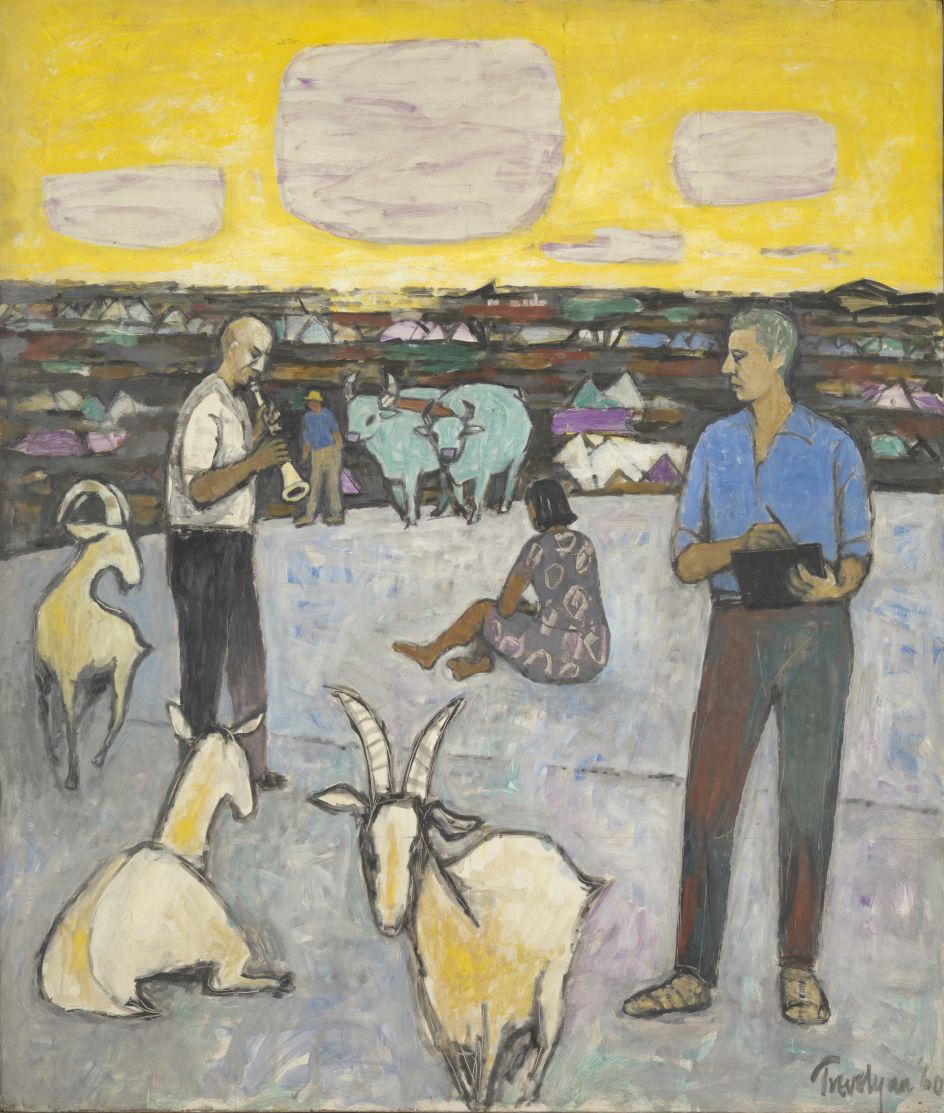
Julian Trevelyan, Self-Portrait with Mary, oil on canvas, 1960, 150 x 130 cm, Tate © Tate, London 2018 / The Julian Trevelyan Estate
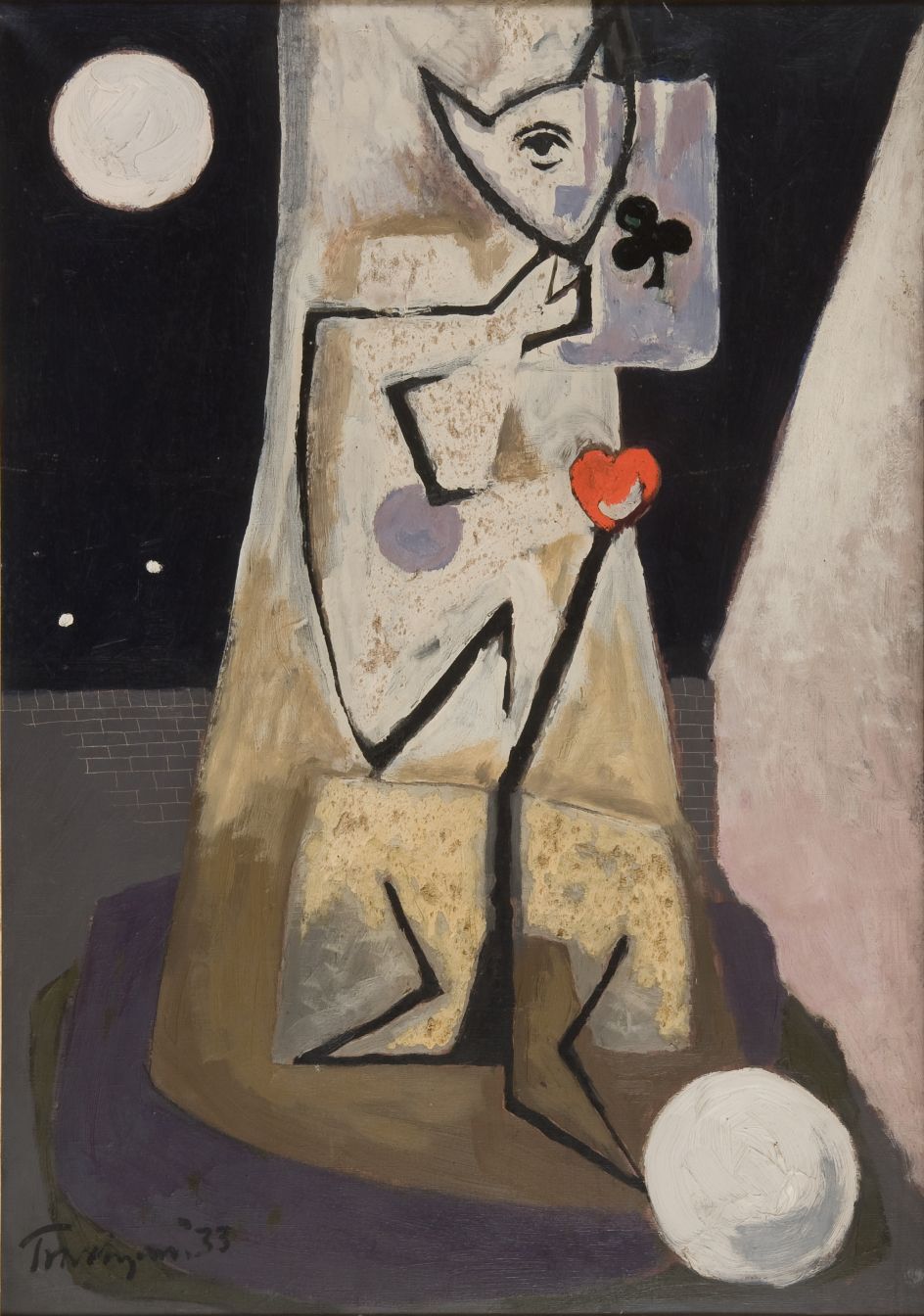
Julian Trevelyan, Standing Figure with Ace of Clubs, 1933, oil on canvas, Photograph Mike Fear, courtesy Jerwood Collection © The Julian Trevelyan Estate
Under Hayter’s guidance, etching became the principal medium for Trevelyan’s exploration of the subconscious mind, as can be seen in Standing Figure with Ace of Clubs (1933). As a serious student of Surrealism, he explored automatism and disassociation, recorded dreams and experimented with hallucinogens. Two works from his Dream Cities series – in which he "invented a sort of mythology of cities, of fragile structures carrying here and there a few waif-like inhabitants" – were shown in the International Surrealist Exhibition in 1936. Despite his immersion in Surrealism in Paris, Trevelyan continued to paint in a conventional style when travelling. He labelled these parallel modes of expression his "Jekylls and Hydes".
In the late 1930s, Trevelyan was invited to take part in the Mass Observation project which aimed to record the routines and rituals of everyday life in Britain using volunteer observers, diarists and participants. Commissioned to depict life in Bolton, Trevelyan created a powerful series of collages and paintings of the industrial north. The collages, including Rubbish May be Shot Here (1937), incorporated allusions to contemporary politics and popular culture by way of magazine and newspaper cuttings, old catalogues and bills, and the paintings, including The Potteries (1938), were darkly expressive yet deeply personal in their evocation of poverty and deprivation.
Trevelyan also met the Ashington Miners, now better known as the Pitman Painters. Having had little formal training himself, Trevelyan was fascinated by these self-taught painters, believing strongly that anyone could be an artist. In 1939, shortly after resigning from the London Surrealist Group, he organised an exhibition of their work at the Peckham Health Centre.
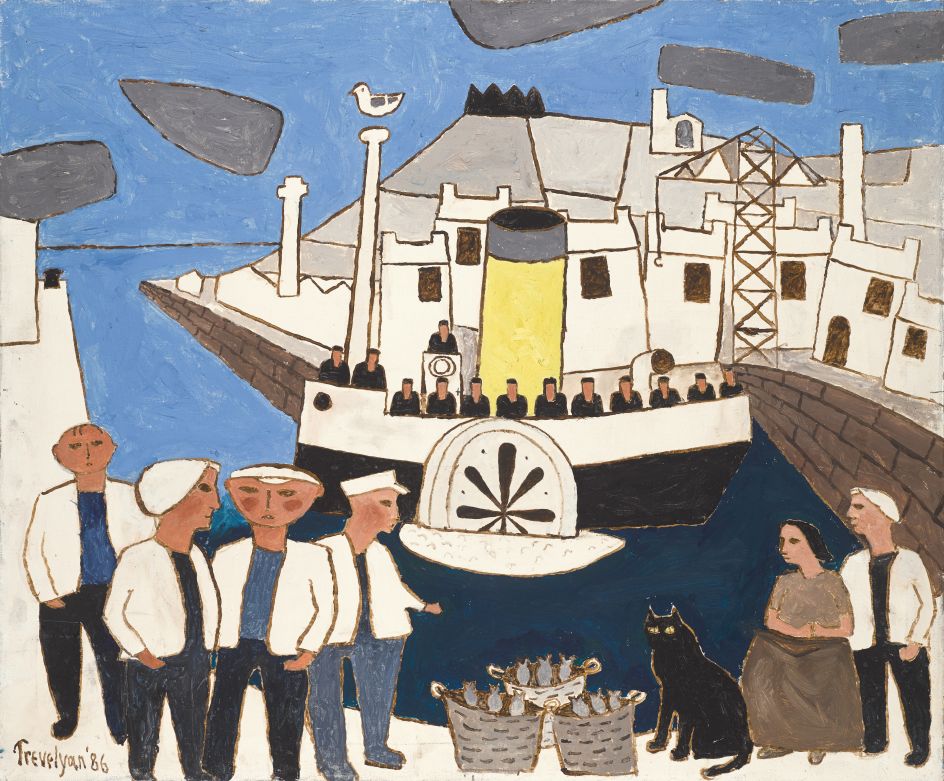
Julian Trevelyan, Paddle Steamer, 1986, oil on canvas, 30 x 36 cm, Private Collection © The Julian Trevelyan Estate

Julian Trevelyan, Bolton 1,000,000 volts, 1937, collage, 48.26 x 60.96, Private Collection © The Julian Trevelyan Estate
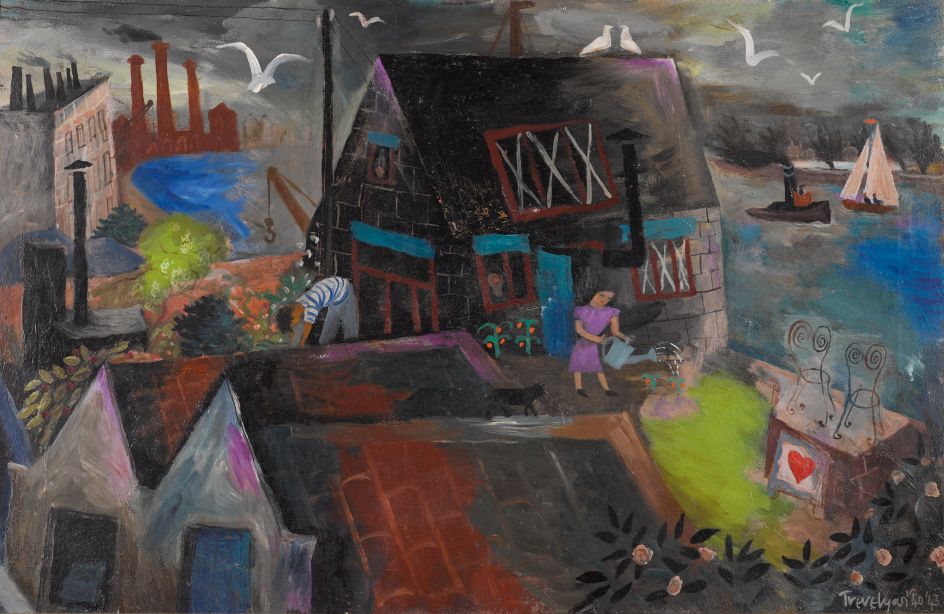
Julian Trevelyan, Durham Wharf, 1940/43, oil on canvas, 66.5 x 101.5 cm, Private Collection © The Julian Trevelyan Estate
After the Second World War, during which he served with the Industrial Camouflage Research Unit alongside fellow artists William Stanley Hayter and Roland Penrose, Trevelyan married the artist Mary Fedden. A section of the exhibition will be devoted to works made during Trevelyan’s extensive travels, both those he undertook in Africa during the war and subsequent travels with Fedden, in Europe, India and America.
Fedden and Trevelyan lived together at Durham Wharf, a collection of small warehouses on the Thames in Hammersmith that had once been the studio of sculptor Eric Kennington and had been the home of Trevelyan and his first wife, the potter Ursula Darwin. Trevelyan found a new lyricism in painting Durham Wharf and the River Thames and the exhibition includes works such as Durham Wharf (1940–3), Albert Bridge (1953) and Mudbanks (1978) which depict Trevelyan’s experiences of Hammersmith through the decades.
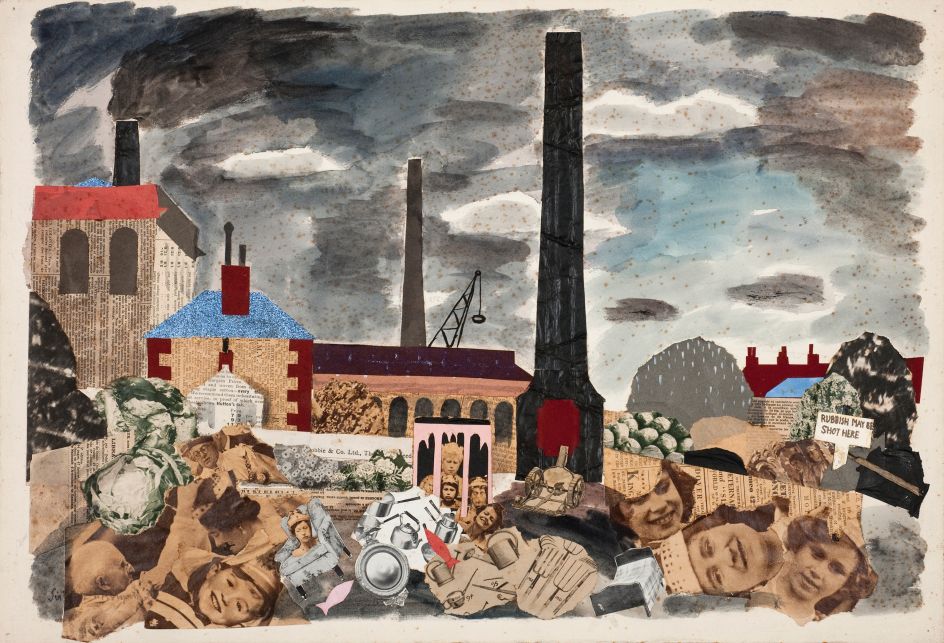
Julian Trevelyan, Rubbish May be Shot Here, 1937, mixed media on paper, 31 x 54 cm, © Tate, London 2018 / The Julian Trevelyan Estate
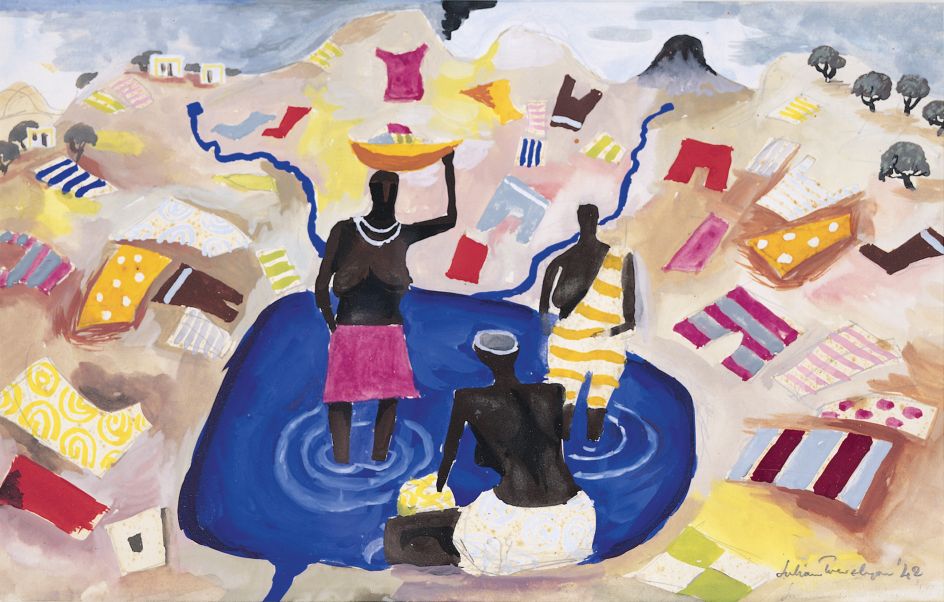
Julian Trevelyan, Washing Day, Freetown, 1942, gouache on paper, 21 x 33cm, Private collection © The Julian Trevelyan Estate
Trevelyan was an innovative and unorthodox printmaker throughout his life and in 1956 he joined the staff of the Royal College of Art, later becoming Head of Printmaking, a post which he held until 1963. He taught David Hockney, R. B. Kitaj and Norman Ackroyd among others, and was hugely influential in the revival of etching in the 1960s. As many as half of the works on display will be prints, suggesting that Trevelyan should be remembered as much for his innovative printmaking as for his painting.
Julian Trevelyan: The Artist and His World at Pallant House Gallery in Chichester runs from 6 October 2018 until 10 February 2019. Find out more at pallant.org.uk.

















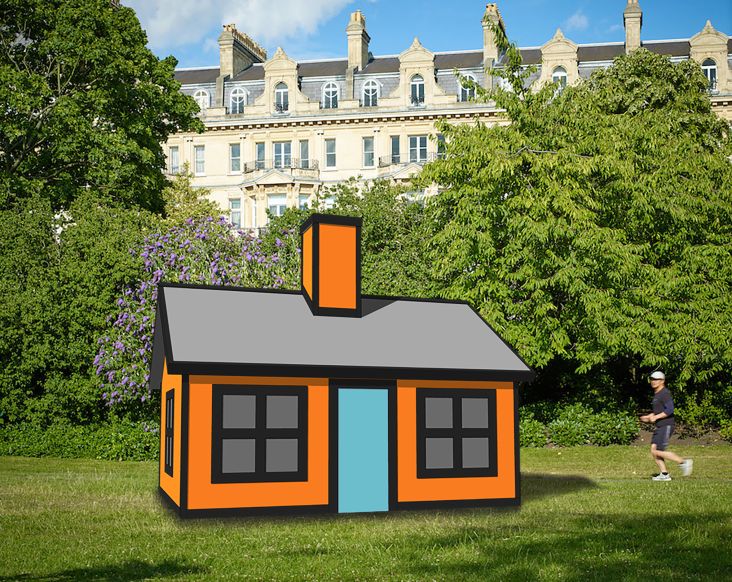
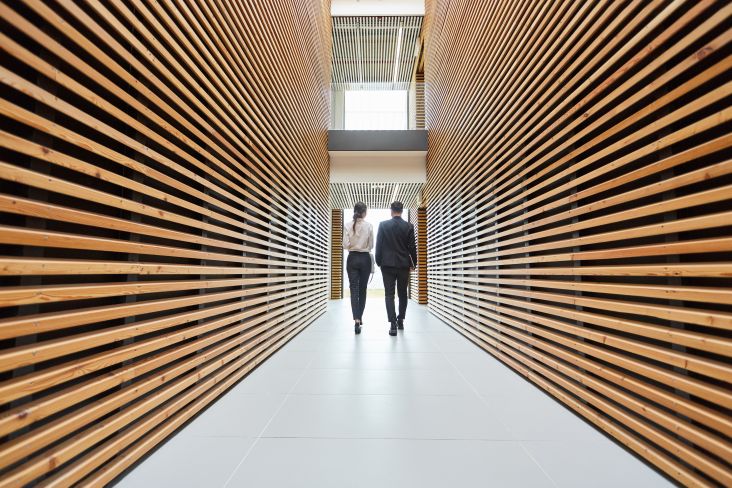
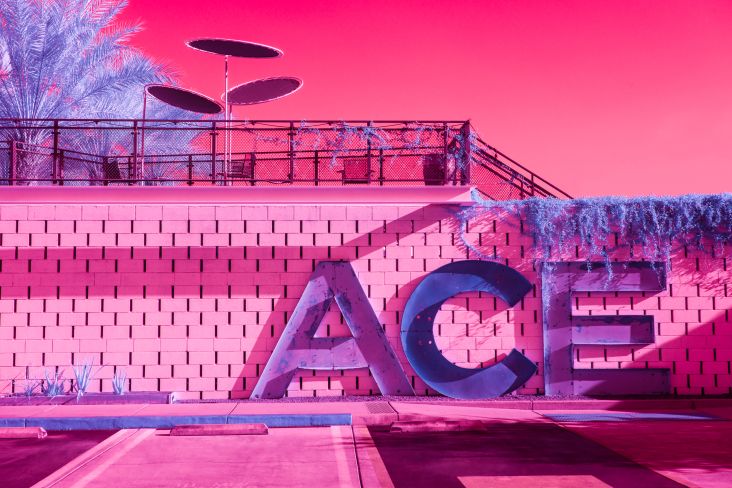
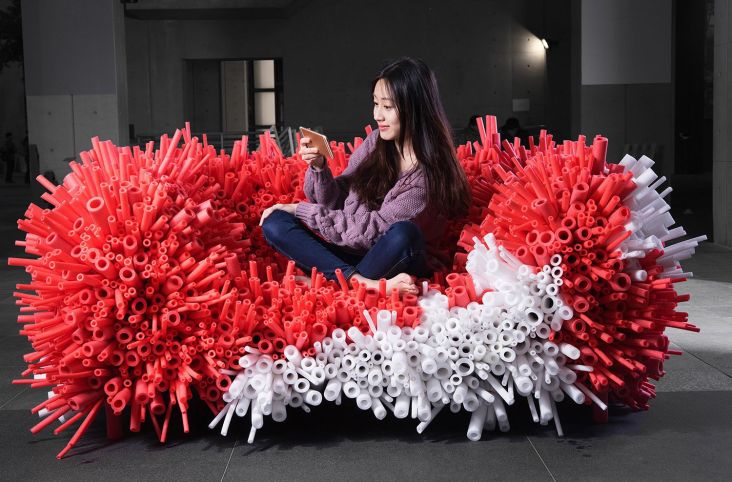
 and [Fontsmith](http://www.fontsmith.com)](https://www.creativeboom.com/upload/articles/b9/b9516cdb3e33a14c0cb652316e1ca8737044453f_732.png)
